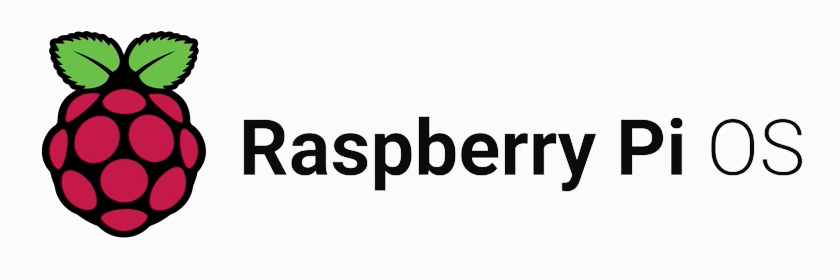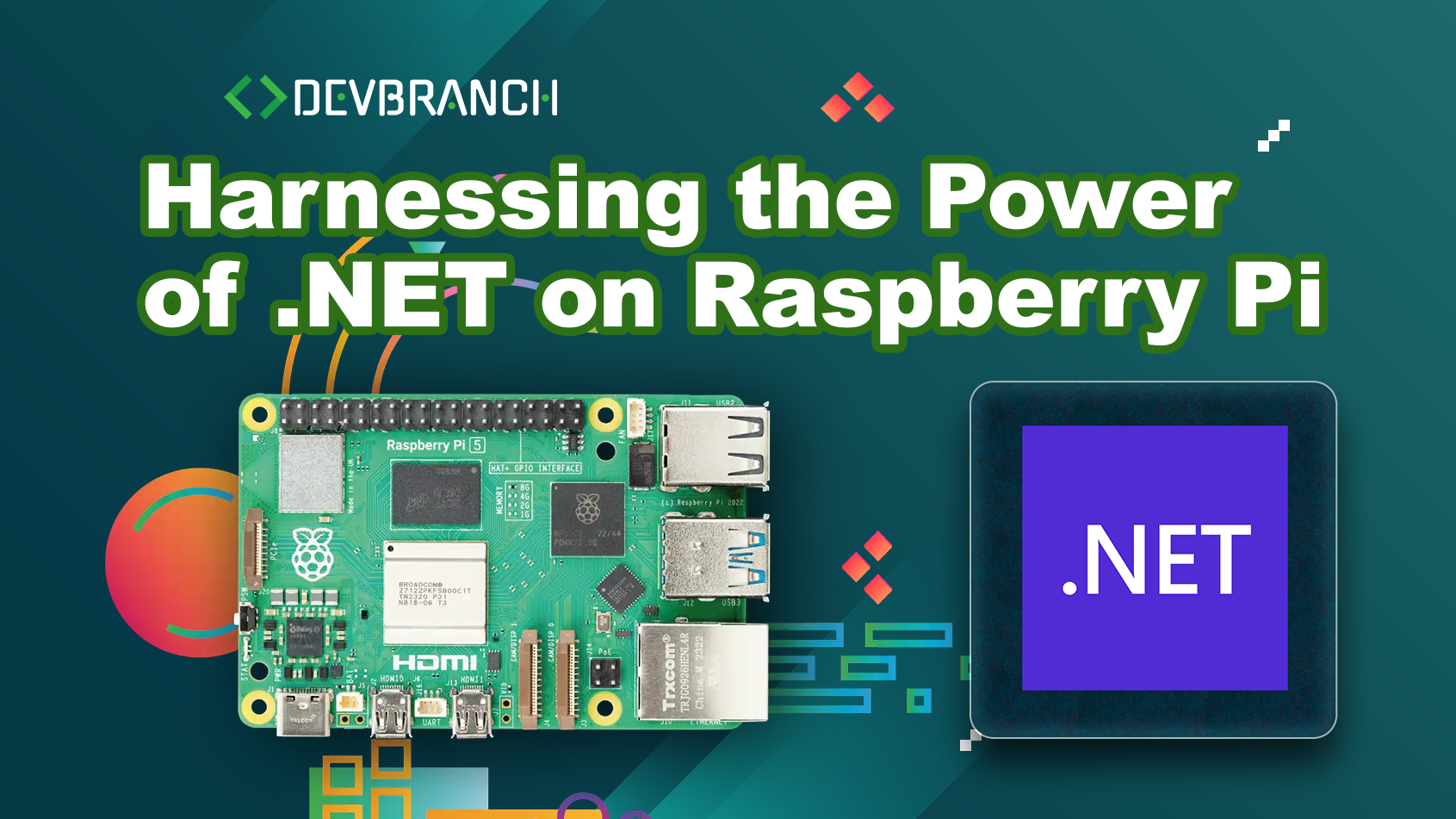Harnessing the Power of .NET on Raspberry Pi.
Introduction

The Raspberry Pi, a small yet powerful computer, has transformed how we approach computing and electronics. Its affordability and versatility make it a staple for hobbyists, educators, and professionals. When combined with .NET, a robust, cross-platform development framework, the Raspberry Pi becomes a powerful tool for building everything from web servers to complex IoT systems.
This guide delves deep into the process of setting up .NET on Raspberry Pi, exploring development scenarios, advanced configurations, and deployment strategies. Whether you’re a seasoned developer or just getting started, this comprehensive resource will help you unlock the full potential of .NET on Raspberry Pi.
Getting Started with Raspberry Pi
Choosing the Right Raspberry Pi Model:
The choice of Raspberry Pi model can significantly impact the performance and capabilities of your project.
| Model | CPU | RAM | Storage | USB Ports | Ethernet | Wi-Fi | Bluetooth | GPIO Pins | Power Consumption | Other Features |
| Raspberry Pi 5 | Quad-core 64-bit ARM Cortex-A76 (2.4 GHz) | 4GB or 8GB LPDDR4X | microSD, USB 3.0 | 2 x USB 3.0, 2 x USB 2.0 | Gigabit Ethernet | 2.4 GHz & 5 GHz | Bluetooth 5.0 | 40 | Moderate | PCIe support, dual 4K display |
| Raspberry Pi 4 Model B | Quad-core 64-bit ARM Cortex-A72 (1.5 GHz) | 2GB, 4GB, or 8GB LPDDR4 | microSD, USB 3.0 | 2 x USB 3.0, 2 x USB 2.0 | Gigabit Ethernet | 2.4 GHz & 5 GHz | Bluetooth 5.0 | 40 | Moderate | Dual 4K display output, USB-C power |
| Raspberry Pi 3 Model B+ | Quad-core 64-bit ARM Cortex-A53 (1.4 GHz) | 1GB LPDDR2 | microSD | 4 x USB 2.0 | Gigabit Ethernet (300 Mbps) | 2.4 GHz & 5 GHz | Bluetooth 4.2 | 40 | Low to Moderate | Power over Ethernet (PoE) support |
| Raspberry Pi 3 Model B | Quad-core 64-bit ARM Cortex-A53 (1.2 GHz) | 1GB LPDDR2 | microSD | 4 x USB 2.0 | 100 Mbps Ethernet | 2.4 GHz | Bluetooth 4.1 | 40 | Low to Moderate | HDMI output, Camera interface (CSI) |
| Raspberry Pi Zero 2 W | Quad-core 64-bit ARM Cortex-A53 (1 GHz) | 512MB LPDDR2 | microSD | 1 x Micro USB | No | 2.4 GHz | Bluetooth 4.2 | 40 | Very Low | Mini HDMI, Compact size |
| Raspberry Pi Zero W | Single-core 32-bit ARM11 (1 GHz) | 512MB LPDDR2 | microSD | 1 x Micro USB | No | 2.4 GHz | Bluetooth 4.1 | 40 | Very Low | Mini HDMI, Compact size |
| Raspberry Pi 2 Model B | Quad-core 32-bit ARM Cortex-A7 (900 MHz) | 1GB LPDDR2 | microSD | 4 x USB 2.0 | 100 Mbps Ethernet | No | No | 40 | Low | Compatible with older accessories |
Key Considerations:
- Performance: The Raspberry Pi 5 and Raspberry Pi 4 Model B are the most powerful, with higher CPU clock speeds and more RAM options, making them suitable for more demanding applications.
- Connectivity: Higher models like the Raspberry Pi 4 and 5 offer Gigabit Ethernet, USB 3.0, and dual-band Wi-Fi, providing better connectivity options.
- Size and Power: The Raspberry Pi Zero models are compact and consume less power, ideal for lightweight projects or where space is limited.
- Display and Multimedia: Raspberry Pi 4 and 5 support dual 4K display output, making them suitable for media centers or digital signage.
- Use Case: The choice of model depends on your project requirements. For example, Raspberry Pi Zero W is great for IoT projects, while Raspberry Pi 4 Model B is better suited for desktop replacement or server tasks.
Setting Up Raspberry Pi:
- Flashing the OS:
- Start by downloading the Raspberry Pi Imager from the official website. This tool simplifies the process of installing an operating system onto your microSD card. Raspberry Pi OS (formerly Raspbian) is the recommended OS for beginners, but if you need a more server-oriented environment, Ubuntu Server is a great alternative.
- Once the OS is flashed onto the microSD card, insert it into your Raspberry Pi. Connect your peripherals, such as a keyboard, mouse, and monitor, and power it up.
- Initial Configuration:
- Upon first boot, you’ll be guided through a setup wizard where you can configure language settings, connect to a Wi-Fi network, and install updates. These steps are crucial for ensuring your Raspberry Pi is ready for development.
- Configure the hostname and enable SSH for remote access. This allows you to work on your Raspberry Pi without needing a dedicated monitor or keyboard, making it easier to integrate into projects where physical space is limited.
- Remote Access:
- Enabling SSH is straightforward through the Raspberry Pi Configuration tool or via raspi-config on the command line. You can connect remotely using tools like PuTTY on Windows or directly through the terminal on Linux and macOS.
- For a graphical interface, enable VNC. This gives you full remote desktop access to your Raspberry Pi, allowing you to interact with the GUI as if you were sitting in front of it.
Installing .NET on Raspberry Pi
Prerequisites:

Before installing .NET, ensure your Raspberry Pi’s OS is up-to-date. This not only provides the latest features but also patches any known security vulnerabilities. Run the following commands to update your system:
sudo apt update
sudo apt upgradeNext, install essential dependencies required for running .NET. These include libraries that help manage low-level operations and ensure .NET runs smoothly on your ARM-based Raspberry Pi:
sudo apt install libunwind8 gettext apt-transport-httpsInstalling .NET SDK and Runtime:
- Adding Microsoft Package Repository:
- Microsoft maintains a repository of .NET packages for various Linux distributions. Adding this repository to your Raspberry Pi ensures you can easily install and update .NET using the system’s package manager:
wget https://packages.microsoft.com/config/debian/11/packages-microsoft-prod.deb -O packages-microsoft-prod.deb
sudo dpkg -i packages-microsoft-prod.deb- Installing .NET SDK:
- Once the repository is added, install the .NET SDK, which includes everything you need to build and run .NET applications:
sudo apt update
sudo apt install dotnet-sdk-8.0After installation, verify by checking the version:
dotnet --versionThis command should output the installed .NET version, confirming that the installation was successful.
Notes:
- Ensure your Raspberry Pi is running a compatible OS (like Raspberry Pi OS based on Debian 11 or Ubuntu 22.04) to install .NET SDK 8.
- If you already have an earlier version of .NET SDK installed (like .NET SDK 6.0), you can have multiple versions installed simultaneously, and you can specify which version to use for your projects.
Developing .NET Applications on Raspberry Pi
Creating a Simple Console Application:
- Creating the Project:
- The first step in any .NET project is to create a new project directory and initialize a .NET project within it. For a simple console application, you can run:
dotnet new console -o HelloWorld
cd HelloWorldThis creates a basic template with a single file, Program.cs, containing the entry point for your application.
- Editing the Program:
- Open
Program.csin your preferred text editor. You’ll see a simple “Hello, World!” program. Modify it to something more relevant to your Raspberry Pi development:
- Open
Console.WriteLine("Hello, Raspberry Pi and .NET!");This line outputs a message to the console, providing a simple but effective way to test your .NET setup.
- Running the Application:
- Compile and run your application using:
dotnet runThis command compiles your C# code and executes the resulting application, displaying the output in the terminal.
Developing Web Applications with ASP.NET Core:
- Creating an ASP.NET Core Project:
- ASP.NET Core is a cross-platform web framework for building modern, cloud-based, internet-connected applications. To create a new web application project, use:
dotnet new webapp -o MyWebApp
cd MyWebAppThis command sets up a basic ASP.NET Core web application with Razor Pages, providing a solid starting point for web development on Raspberry Pi.
- Configuring for Raspberry Pi:
- Running a web application on Raspberry Pi requires some configuration to ensure it’s accessible on your local network. Edit
appsettings.jsonto specify Kestrel server settings, such as binding to all network interfaces:
- Running a web application on Raspberry Pi requires some configuration to ensure it’s accessible on your local network. Edit
{
"Kestrel": {
"EndPoints": {
"Http": {
"Url": "http://*:5000"
}
}
}
}This configuration allows you to access your web application from any device on the same network.
Running the Web Application:
- Introduction to .NET IoT Libraries:
- .NET IoT libraries like
System.Device.GpioandIot.Device.Bindingsprovide a powerful API for interacting with hardware components such as sensors, actuators, and displays. These libraries simplify the process of integrating physical hardware with your software, enabling you to build robust IoT solutions.
- .NET IoT libraries like
- Example Project – Temperature Monitoring System: A practical example of using .NET for IoT is building a temperature monitoring system. For this project, you’ll need a DHT11 sensor connected to the Raspberry Pi’s GPIO pins.
- Connecting the Sensor: The DHT11 sensor has four pins: VCC, GND, Data, and a not-connected pin. Connect VCC to a 3.3V pin on the Raspberry Pi, GND to ground, and the Data pin to a GPIO pin (e.g., GPIO 4).
- Writing the Code: Start by installing the necessary NuGet package:
dotnet add package Iot.Device.BindingsThen, create a program that reads temperature and humidity data from the sensor and displays it:
using System;
using System.Device.Gpio;
using Iot.Device.DHTxx;
var dht = new Dht11(4); // GPIO 4
while (true)
{
var temp = dht.Temperature.Celsius;
var humidity = dht.Humidity;
Console.WriteLine($"Temperature: {temp}°C, Humidity: {humidity}%");
System.Threading.Thread.Sleep(2000);
}This simple loop continuously reads data from the DHT11 sensor and prints it to the console every two seconds.
Advanced Topics
Cross-Compilation:
Cross-compilation allows you to develop .NET applications on a more powerful machine, such as a Windows or Linux desktop, and then deploy them to your Raspberry Pi. This can be particularly useful for larger projects where the build time on the Raspberry Pi might be significant.
- Setup for Cross-Compilation: Install the .NET SDK on your development machine and set up your project as usual. When you’re ready to deploy, compile the application for the ARM architecture:
dotnet publish -r linux-arm -c ReleaseThis generates a self-contained build that can be transferred and executed directly on your Raspberry Pi.
Using Docker for Cross-Platform Development:
- Installing Docker: Docker provides an efficient way to develop, test, and deploy applications across different environments. To install
curl -sSL https://get.docker.com | shThis script automates the installation process, making it easy to get Docker up and running on your Raspberry Pi.
- Creating a Dockerized .NET Application: Docker allows you to package your .NET applications and their dependencies into a container, ensuring consistent behavior across different environments. To Dockerize your .NET application, create a
Dockerfilein the root directory of your project:
FROM mcr.microsoft.com/dotnet/aspnet:6.0 AS base
WORKDIR /app
EXPOSE 80
FROM mcr.microsoft.com/dotnet/sdk:6.0 AS build
WORKDIR /src
COPY . .
RUN dotnet build -c Release -o /app/build
FROM build AS publish
RUN dotnet publish -c Release -o /app/publish
FROM base AS final
WORKDIR /app
COPY --from=publish /app/publish .
ENTRYPOINT ["dotnet", "MyWebApp.dll"]This Dockerfile defines multiple stages: building the application, publishing it, and finally setting up the runtime environment.
- Build and Run the Docker Image: With the
Dockerfilein place, build the Docker image using:
docker build -t mywebapp .Once the build process is complete, run the container:
docker run -d -p 80:80 mywebappThis command deploys your .NET web application in a container, mapping port 80 of the container to port 80 on your Raspberry Pi. You can access the web app by navigating to your Raspberry Pi’s IP address in a web browser.
Optimizing .NET Applications for Raspberry Pi:
- Performance Tuning: Performance tuning is critical when deploying applications on resource-constrained devices like the Raspberry Pi. Here are some strategies:
- Minimize Resource Usage: Optimize your code to use fewer system resources. Avoid unnecessary memory allocations and try to minimize CPU usage by optimizing algorithms and data structures.
- AOT Compilation: Ahead-of-Time (AOT) compilation can improve startup times and overall performance. You can enable AOT when publishing your application:
dotnet publish -r linux-arm --self-contained -c Release -p:PublishReadyToRun=trueThis command generates a native binary optimized for the ARM architecture, providing better performance on the Raspberry Pi.
- Use Lightweight Libraries: Choose libraries that are optimized for low memory and CPU usage. For instance, instead of using a full-fledged ORM, consider using a lightweight database wrapper if your application doesn’t require complex data interactions.
- Resource Monitoring: Utilize built-in tools like
htoportopto monitor CPU and memory usage. If your application is resource-intensive, consider adjusting the priority of processes usingniceor configuring swap space to prevent memory exhaustion.
Integrating with Other Technologies:
- Connecting .NET with Python Scripts: Sometimes, you may need to integrate .NET applications with Python scripts, especially for tasks like machine learning, where Python has extensive libraries. You can execute Python scripts from a .NET application using the
System.Diagnostics.Processclass:
using System.Diagnostics;
ProcessStartInfo start = new ProcessStartInfo();
start.FileName = "python3";
start.Arguments = "myscript.py"; // Specify the script name and arguments
start.UseShellExecute = false;
start.RedirectStandardOutput = true;
using (Process process = Process.Start(start))
{
using (StreamReader reader = process.StandardOutput)
{
string result = reader.ReadToEnd();
Console.WriteLine(result);
}
}This code snippet runs a Python script and captures its output, allowing your .NET application to integrate seamlessly with Python-based processes.
- Using Databases with .NET on Raspberry Pi: For applications that require data storage, SQLite and MySQL are excellent options that work well with .NET. SQLite is lightweight and serverless, making it ideal for smaller applications or local data storage:
- Installing SQLite: Install SQLite on your Raspberry Pi using:
sudo apt install sqlite3 libsqlite3-devThen, add the SQLite package to your .NET project:
dotnet add package Microsoft.EntityFrameworkCore.SqliteWith this setup, you can interact with SQLite databases directly from your .NET application.
- MySQL for Larger Applications: For more extensive applications requiring robust database management, MySQL offers a good balance of performance and scalability. After installing MySQL on Raspberry Pi, use the
MySql.Datapackage to connect and manage your database from .NET:
dotnet add package MySql.DataConclusion
By combining the flexibility of the Raspberry Pi with the power of .NET, you can create a wide range of applications, from simple command-line tools to complex IoT systems and web applications. This guide has walked you through the process of setting up .NET on Raspberry Pi, developing applications, deploying them efficiently, and handling common challenges. As you continue to explore this platform, you’ll discover even more possibilities and optimizations that can take your projects to the next level.
Whether you’re deploying a home automation system, setting up a personal web server, or experimenting with IoT, the Raspberry Pi and .NET provide a solid foundation for innovation. Keep experimenting, learning, and pushing the boundaries of what you can achieve with this powerful combination.


